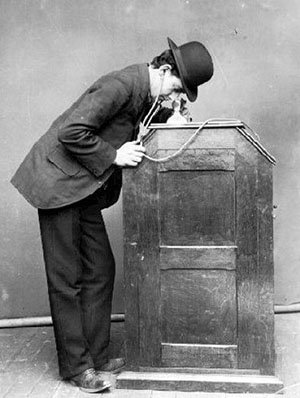The journey of cinema across the last century has been nothing short of a mesmerizing odyssey, encapsulating technological advancements, artistic revolutions, and societal transformations. From the silent black-and-white films of the early 20th century to the immersive experiences of modern blockbusters, the evolution of cinema reflects not only the progress in filmmaking techniques but also the changing tastes and values of societies worldwide.
The Silent Era: Pioneering Cinematic Expression
The inception of cinema can be traced back to the late 19th century, but it wasn’t until the 20th century that it truly flourished. The Silent Era, characterized by films without synchronized sound, saw the birth of cinematic storytelling. Pioneering directors like Charlie Chaplin and Buster Keaton crafted narratives through expressive acting and innovative visual techniques, laying the foundation for the art form.
The Golden Age of Hollywood: Glamour, Stars, and Technicolor
The 1930s through the 1950s marked the Golden Age of Hollywood, an era defined by the rise of the studio system, iconic stars like Marilyn Monroe and Humphrey Bogart, and the introduction of Technicolor. Cinematic storytelling became more sophisticated, exploring complex narratives and genres, from epic dramas to glamorous musicals, captivating audiences worldwide.
The New Wave Movements: Challenging Conventions
The 1960s and 1970s witnessed the emergence of New Wave movements in cinema, challenging traditional storytelling and stylistic conventions. Filmmakers like Jean-Luc Godard and François Truffaut in France, and Akira Kurosawa in Japan, introduced innovative techniques, non-linear narratives, and social commentary, influencing a new generation of directors across the globe.
The Blockbuster Era: Spectacle and Special Effects
As we entered the late 20th century, the concept of the blockbuster film gained prominence. With advancements in special effects and the rise of franchises like Star Wars and Indiana Jones, filmmakers began to create cinematic spectacles that captured the imagination of audiences on a grand scale. The blockbuster era marked a shift towards high-budget productions and a focus on visual extravagance.
Digital Revolution: Changing the Game
The late 20th century and early 21st century witnessed the digital revolution in filmmaking. The transition from analog to digital technology transformed every aspect of the filmmaking process, from production to distribution. Directors like George Lucas and James Cameron embraced digital innovations, enabling them to create visually stunning and technically ambitious films.
Indie Cinema: A Renaissance of Artistic Freedom
Parallel to the blockbuster dominance, the late 20th century also saw the rise of independent cinema. Filmmakers such as Quentin Tarantino and Richard Linklater paved the way for a renaissance of artistic freedom, exploring unconventional narratives and pushing boundaries. Independent films gained recognition for their raw storytelling, unique perspectives, and a departure from mainstream conventions.
Globalization of Cinema: Diversity in Narratives
In recent decades, cinema has become increasingly globalized, with filmmakers from various cultural backgrounds contributing to the diverse tapestry of storytelling. International films, such as those from South Korea (Parasite) and Mexico (Roma), have not only garnered critical acclaim but have also achieved commercial success on a global scale, reflecting a growing appetite for diverse narratives.









